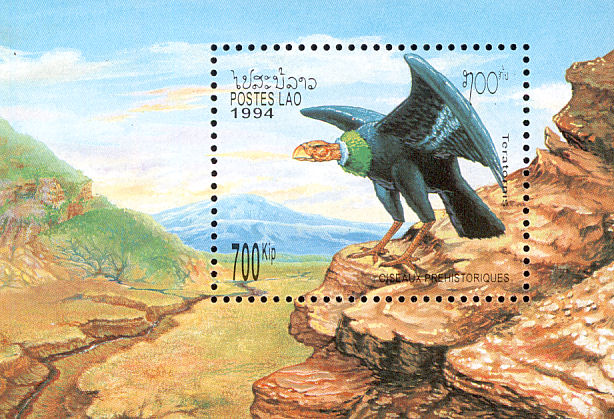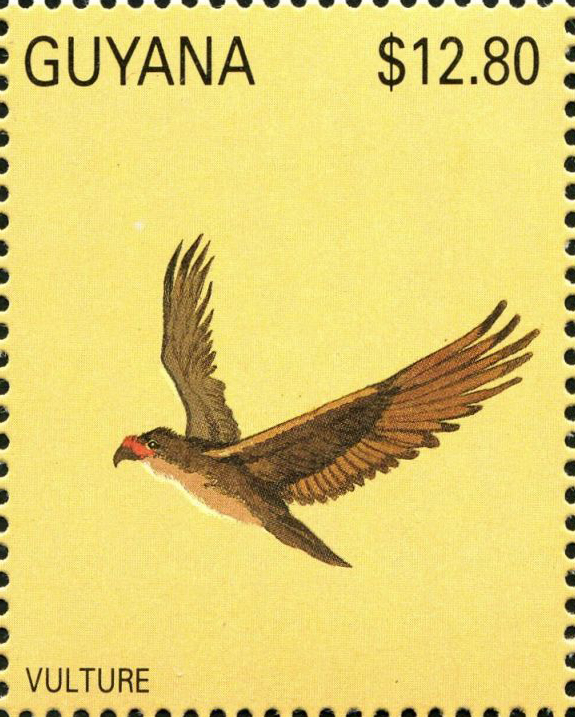Teratornis merriami L. H. Miller, 1909

Phylum: Chordata Haeckel, 1874
Subphylum: Vertebrata Cuvier, 1812
Classe: Aves Linnaeus, 1758
Ordine: Falconiformes Sharpe, 1874
Famiglia: Teratornithidae Miller L.H., 1909
Genere: Teratornis Miller L.H., 1909
Specie e sottospecie
Il genere annovera attualmente le seguenti specie: Teratornis merriami0 Milner, 1909 - Teratornis woodburnensis Campbell & Stenger, 2002.
Descrizione
Con un'apertura alare compresa tra i 3,5 metri e i 3,8 metri, un'altezza di circa 75 centimetri e un peso di 15 chili, questo uccello da preda era più grande del condor delle Ande e pesante circa il doppio del condor della California. Molti resti fossili di questo gigantesco condor sono stati rinvenuti nei pozzi di bitume di Rancho La Brea a Los Angeles, risalenti al Pleistocene superiore. Una specie a esso simile, l'avvoltoio gigante del Nevada (Aiolornis incredibilis), vissuta qualche migliaio di anni prima, era ancora più grande.
Diffusione
Specie di uccello estinto, i cui resti fossili sono stati ritrovati in Nordamerica nei depositi del Pleistocene.
Sinonimi
= Pleistogyps rex Milner, 1910.
Bibliografia
–Miller, Loye H. (1909). "Teratornis, a new avian genus from Rancho La Brea". University of California Publications, Bulletin of the Department of Geology. 5: 305-317.
–"The World's Largest Flying Bird" (PDF).
–Campbell, Kenneth; Tonni, Eduardo (18 October 1982). "Size and Locomotion in Teratorns (Aves: Teratornithidae)" (PDF). Natural History Museum of Los Angeles County: 390-403.
–Campbell, Kenneth E. Jr. & Stenger, Allison T. (2002): A New Teratorn (Aves: Teratornithidae) from the Upper Pleistocene of Oregon, USA}. pp. 1–11. in Zhou, Z. and F. Zhang. Proceedings of the 5th Symposium of the Society of Avian Paleontology and Evolution Beijing, 1-4 June 2000. China Science Press, Beijing.
–"Teratorn woodburnensis humerus". Willamette Valley Pleistocene Project.
–Campbell, Kenneth E. Jr. & Tonni, E. P. (1983). "Size and locomotion in teratorns" (PDF). The Auk. 100 (2): 390-403.
–Fisher, Harvey I. (1945). "Locomotion in the Fossil Vulture Teratornis". The American Midland Naturalist. 33 (3): 725-742.
–Kenneth E. Campbell, Jr, Eduardo P. Tonni. "Size and Locomotion in Teratorns (Aves: Teratornithidae)". The Auk, Volume 100, Issue 2, April 1983, pp. 390-403.
–Fisher, Harvey I. (1945). "Locomotion in the Fossil Vulture Teratornis". American Midland Naturalist. 33 (3): 725-742.
–Si, Guangdii; Dong, Yiyi; Ma, Yujun; Zhang, Zihui (2015). "Shape Similarities and Differences in the Skulls of Scavenging Raptors". Zoological Science. 32 (2): 171-177.
–Potier, Simon (2020). "Visual Adaptations in Predatory and Scavenging Diurnal Raptors". Diversity. 12 (10): 400.
–Hertel, Fritz (1995). "Ecomorphological indicators of feeding behavior in Recent and fossil raptors" (PDF). Auk. 112 (4): 890-903.

|
Data: 20/01/1994
Emissione: Animali estinti e preistorici Stato: Laos |
|---|

|
Data: 06/11/1990
Emissione: La natura nel Cenozoico Stato: Guyana Nota: Emesso in un foglietto di 20 v. diversi |
|---|